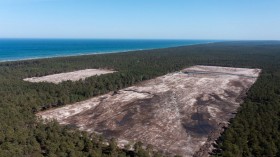NASA's Spitzer and Hubble Space Telescopes have spotted a candidate for one of the most distant galaxies known to man. Researchers estimate that the galaxy, referred to as Abell2744 Y1, formed 650 million years after the big bang (our universe is 13.8 billion years old). Compared to our Milky Way galaxy, the new discovery is about 30 times smaller but is producing about 10 times as many stars, according to a release describing the findings.
"The discovery comes from the Frontier Fields program, which is pushing the limits of how far back we can see into the distant universe using NASA's multi-wavelength suite of Great Observatories. Spitzer sees infrared light, Hubble sees visible and shorter-wavelength infrared light, and NASA's Chandra X-ray Observatory sees X-rays. The telescopes are getting a boost from natural lenses: they peer through clusters of galaxies, where gravity magnifies the light of more distant galaxies," the release said.
The Frontier Fields program will observe six galaxies in total. Hubble is used to spot distant potential galaxies, and then Spitzer determines the actual distance to the galaxy.
If confirmed, the new galaxy, with a redshift of 8, will be one of the farthest galaxies known. The redshift measures the degree to which the light from a galaxy has shifted to redder wavelengths due to the expanision of the universe. The farthest confirmed galaxy has a redshift of more than 7, while potential candidates have been recorded with redshifts as high as 11.
"Just a handful of galaxies at these great distances are known," said Jason Surace, of NASA's Spitzer Science Center at the California Institute of Technology, Pasadena. "The Frontier Fields program is already working to find more of these distant, faint galaxies. This is a preview of what's to come."
The findings, led by astronomers from the Instituto de Astrofísica de Canarias and La Laguna University, will be published in the journal Astronomy and Astrophysics Letters.
© 2024 NatureWorldNews.com All rights reserved. Do not reproduce without permission.





